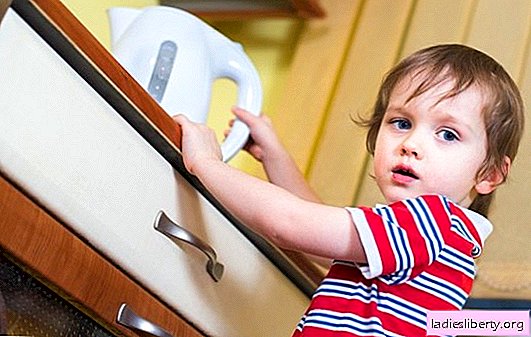
The sun brings an atmosphere of warmth and joy to the house.
Especially made by yourself.
This is the best guest for the kids room. And if you make it with a double function: decoration and toy ?!
Such a sun will be ready to please the baby every minute. It can even be used as a small pillow.
The textile sun is easy to use and also easy to wash in a washing machine.
It is recommended to sew the sun with your own hands together with the child. This is a very useful activity. It learns methodology in the actions performed, disciplines and teaches concentration. The creative sewing process develops fine motor skills, perseverance. In such an occupation, under the supervision of an adult, the child learns to use scissors and, if age permits, a needle.
All this brings together and brings the family together.. In addition, old unnecessary things disappear from the house and are born in a new interesting form.

To make the sun with your own hands, you will need the following materials: a round container (for example, a regular dinner plate), simple office paper to create a pattern, fabric for the sun (you can use fleece or velor), fabric for the lining (you can use calico), white and yellow felt, adhesive Moment, synthetic filler for the sun , yellow and orange yarn for making rays in the sun, decoration tape, toy eyes, decorative buttons (beetles, vegetables, fruits), scissors, pencil, needle, matching threads, sewing machine.

The creative process of sewing the sun begins:
1. Take a suitable plate and lay on the paper. If desired, choose the largest diameter cookware. A circle looms. To the resulting circle you need to independently draw one hand. It is located above the imaginary middle of the sun (Fig. 2);

2. The resulting pattern is bent in half and the future pattern is cut out (Fig. 3);
3. In fig. 4 shows a finished pattern with two handles. That is why it was not necessary to draw a second hand on paper by yourself. The figure also shows in what positions the fingers may be inside the future finished toy;
4. Paper is taken in hands and one more pattern is cut out - the back of the sun. In diameter, it is equal to the first. An ellipsoidal hole is made in it (Fig. 5). Subsequently, fabric will be sewn to this part along the entire edge - a sleeve;

5. To make a sleeve from a suitable fabric, a rectangular cut is cut, the length of the side of which is equal to the length of the ellipsoidal hole (Fig. 6). The depth of planting tissue on the arm is measured at will (from 20 cm or more);
6. Figure 7 shows all the details that should eventually turn out;
7. Patterns can be transferred to fabric (Fig. 8). It is recommended to cut the sun according to the same pattern as the paper pattern was made: outline half, bend and cut one whole. It is recommended to stitch the fabric along the outline before cutting, as the fabric is intrinsically highly stretched;

8. Next is the lining. It can be immediately stitched to the main part from the wrong side. The edge is processed with an overlock or zigzag stitch (Fig. 9);
9. The lines of the pens are narrowed. There is no need to make allowances. The hole for turning on the front side is also (Fig. 10);
10. Now you can cut the part (Fig. 11). In parallel with this, the sleeve is shortened;
11. A pattern is taken in the back of the sun and is applied from the side of the pad. A hole is made for stuffing the toys with synthetic filler (Fig. 12);

12. The filler is filled into the inner space (Fig. 13). We recommend using tweezers. At the end, the hole is manually sewn onto a blind seam;
13. A sleeve is sewn from the back of the product. The round neckline must be pulled together with any thick thread (Fig. 14). Then the sleeve is sewn from the wrong side. It is advisable to lay the line manually;

14. In fig. 15 shows the resulting product: the sun with handles, a sleeve on the arm. The main stage is over;
15. The decoration process begins. Beams are made for the sun with their own hands. The yarn is taken and wound on any suitable object from a length of 16 cm. On the right side (or left), the wound yarn is cut (Fig. 16);
16. The yarn is laid out on paper (length from one handle in an arc to another) and just a machine line passes through it (Fig. 17). The paper comes off, comes off;

17. The resulting rays are glued to the moment glue. Later, after the glue dries, they are sewn for reliability with a hand thread (Fig. 18). Similar actions should be carried out with the rays of the lower half of the sun;
18. Now the rays are braided into pigtails (Fig. 19). The pigtail at the bottom is tied to a thread to prevent it from opening;
19. The face is decorated. To make a nose, a round piece of fabric is cut from the fleece from the sun. At the edges it is manually stitched, the thread is tightened to get the shape of a pouch. A synthetic filler is stuffed inside the nose (Fig. 20). The resulting nose is sewn to the sun;

20. Toy eyes are glued. The shape of the mouth and eyebrows is manually embroidered (Fig. 21). A decoration (such as a fungus) is sewn onto a sunny palm. It should connect with threads to the facial tissue, not the back. The toy can be decorated with a button in the shape of a ladybug. A felt daisy is being built on one of the upper rays. This fabric is very dense in properties, holds its shape well and will not wrinkle spontaneously. Chamomile petals can be connected to each other by a seam manually, or glued to glue. The yellow circle is last glued on top;

21. The ribbon for decoration is divided by the number of pigtails. The edges are cauterized by the flame of a candle. All ribbons are tied to the braids of the sun;
22. Pink cheeks are drawn with ordinary blush or red pencil in the sun.

Everything, a wonderful magical sun with your own hands is ready!











